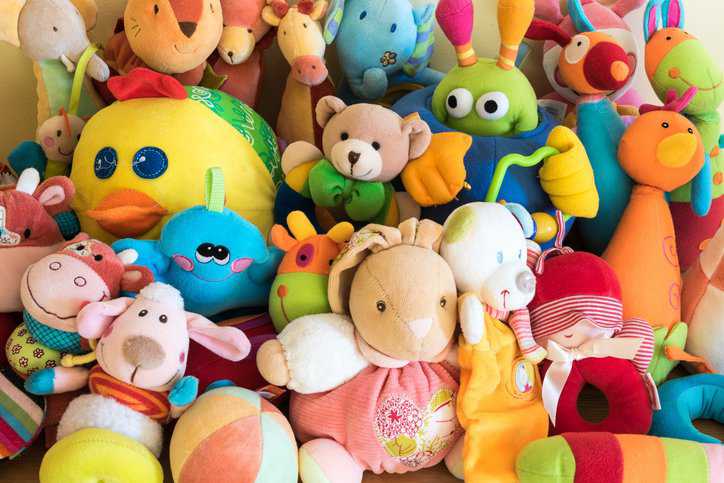Flammability is an aspect that certain toy safety standards cover because some toys can easily catch on fire if they contain flammable material that would pose a hazard to children (e.g., plush toys). ISO 8124-2:2023—Safety Of Toys – Part 2: Flammability describes requirements and test methods to determine the flammability of toys.
What Is ISO 8124-2?
ISO 8124-2:2023 specifies the categories of flammable materials that are prohibited in all toys and details requirements concerning flammability of certain toys when they are subjected to a small source of ignition. The test methods described in this standard are used for the purposes of determining the flammability of toys under the particular test conditions specified. ISO 8124-2:2023 includes general requirements relating to all toys, specific requirements, and test methods relating to the following toys, which are considered as being those presenting the greatest hazard:
- Toys intended to be worn on the head, such as beards, moustaches and wigs made from pile or flowing elements, masks, hoods and headdresses; however, paper and paperboard hats without embellishments or attachments are excluded
- Toy disguise costumes and toys intended to be worn by a child in play
- Toys intended to be entered by a child and constructed from textiles and/or polymer sheets and films
- Soft-filled toys
Our blog post ISO 8124 – Toy Safety Standards details all the Parts that constitute the ISO 8124 Series for Toy Safety.
The Science of Why Different Species “Play”
The scientific definition of play is “repeated, pleasurable behavior done for its own sake that’s similar, but not identical to, other behaviors”—and to this end it cascades into the animal kingdom, too. Studies have observed play in creatures from crocodiles, chimps, and wasps. Species of many kinds play and the reasons why vary from test-runs for adulthood, to developing motor skills and physical intelligence, to enhancing communication skills, and to simply having mentally uplifting fun. In regards to childhood development, the natural accompaniment to the two kinds of human play—imitative and instructive— is the toy. While some toys have evolved, some remain remarkably consistent with some of the earliest known toys in the history of human civilization, such as sticks grasped to use as walking staffs and rolling objects that led to the ball. Toys have grown in tandem with human civilization—helping the mind mature in imitation, creativity, and curiosity.
Development of Modern Toys
With the onset of the Industrial Revolution, toys were able to be mass produced and thus cheaper. Some revolutionary modern toys are:
- The jigsaw puzzle was invented in 1767 by John Spilsbury, who intended to teach geography by cutting maps into pieces, but soon people began making jigsaws for entertainment.
- The kaleidoscope was invented in 1817.
- In the 19th century, middle class girls played with wood or porcelain dolls. They also had dolls houses, model shops, and skipping ropes. Boys played with toys like marbles, toy boats, toy trains, and toy soldiers.
- In a well-off Victorian family children played with rocking horses, spinning tops, and clockwork toys like moving animals. Clockwork trains were also popular as well as the jackin-the-box. Hoops and games like knucklebones and pick up sticks in which you had to pick up colored sticks from a pile without disturbing the others. Children also loved magic lantern (slide) shows and puppet shows.
- In the late 19th century, town councils laid out public parks for recreation. The first children’s playground was built in a park in Manchester in 1859. Many new toys were invented in the 20th century.
- Plasticine was invented in 1897 by William Harbutt and was first made commercially in 1900.
- In1900, Frank Hornby invented a toy called Meccano. Other popular toys in the early 20th century were tin cars.
- In the 1920s, train sets became very popular as well as soft toys like teddy bears.
- During World War II, most toy factories were turned over to war production, but in the late 20th century, with the arrival of an affluent society, plastic and metal toys became much cheaper and much more common. In the 1950s, Lego became a popular toy.
- Mr Potato Head was invented in 1952. The skateboard was invented in 1958. Barbie dolls were invented in 1959, and Action Man went on sale in Britain in 1966.
- In the early 1970s, space hoppers and clackers were popular toys.
- At the end of the 20th century, computer games became very popular.
ISO 8124-6:2018—Phthalate Esters In Toys explains more about ancient toys and the history of toys.
Flammable Materials
ISO 8124-2:2023 details that the following materials should not be present in toys:
- Celluloid (cellulose nitrate), except when used in varnish, paint or glue, or in balls of the type used for table tennis or similar games
- Highly flammable solids
- Materials with a piled surface which produce surface flash when a flame is applied to the tested
- Material under the conditions described in (test for soft-filled toys); piled surfaces showing no momentary area of flame over the area of the piled surface remote from the test flame are considered to meet this requirement
ISO 8124-2:2023—Safety Of Toys – Part 2: Flammability is available on the ANSI Webstore.
